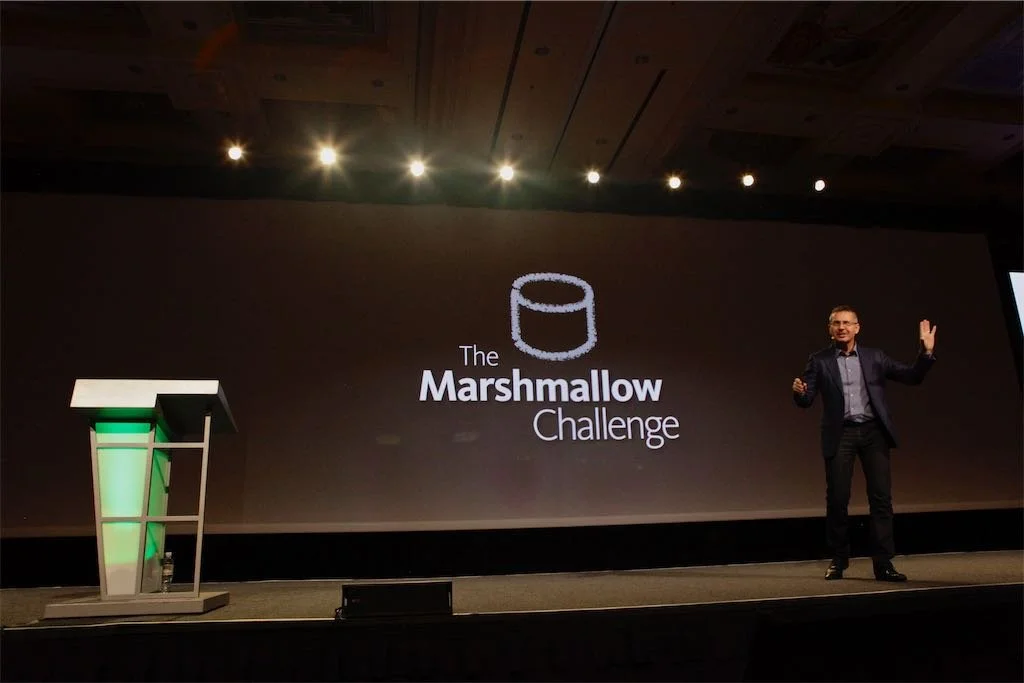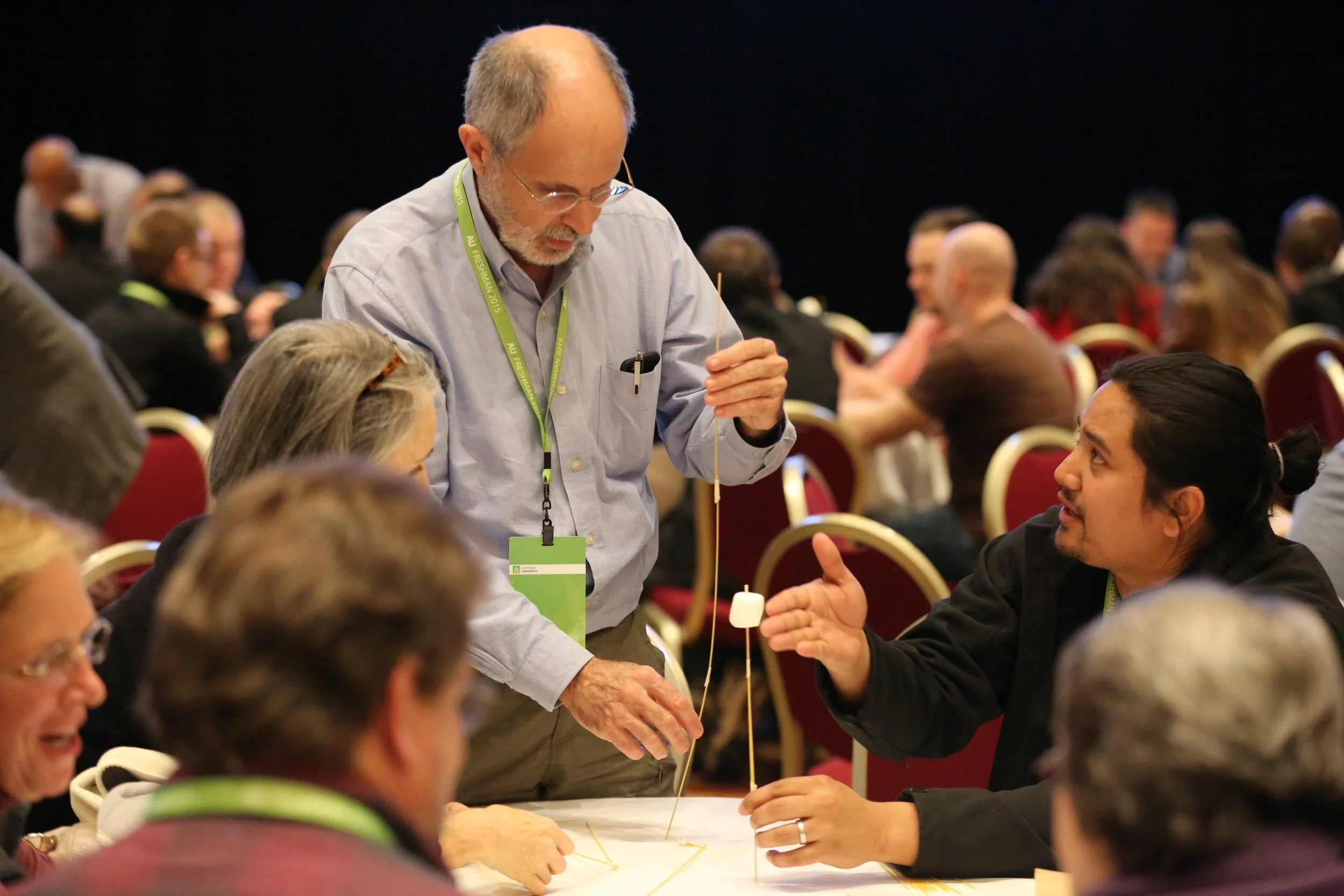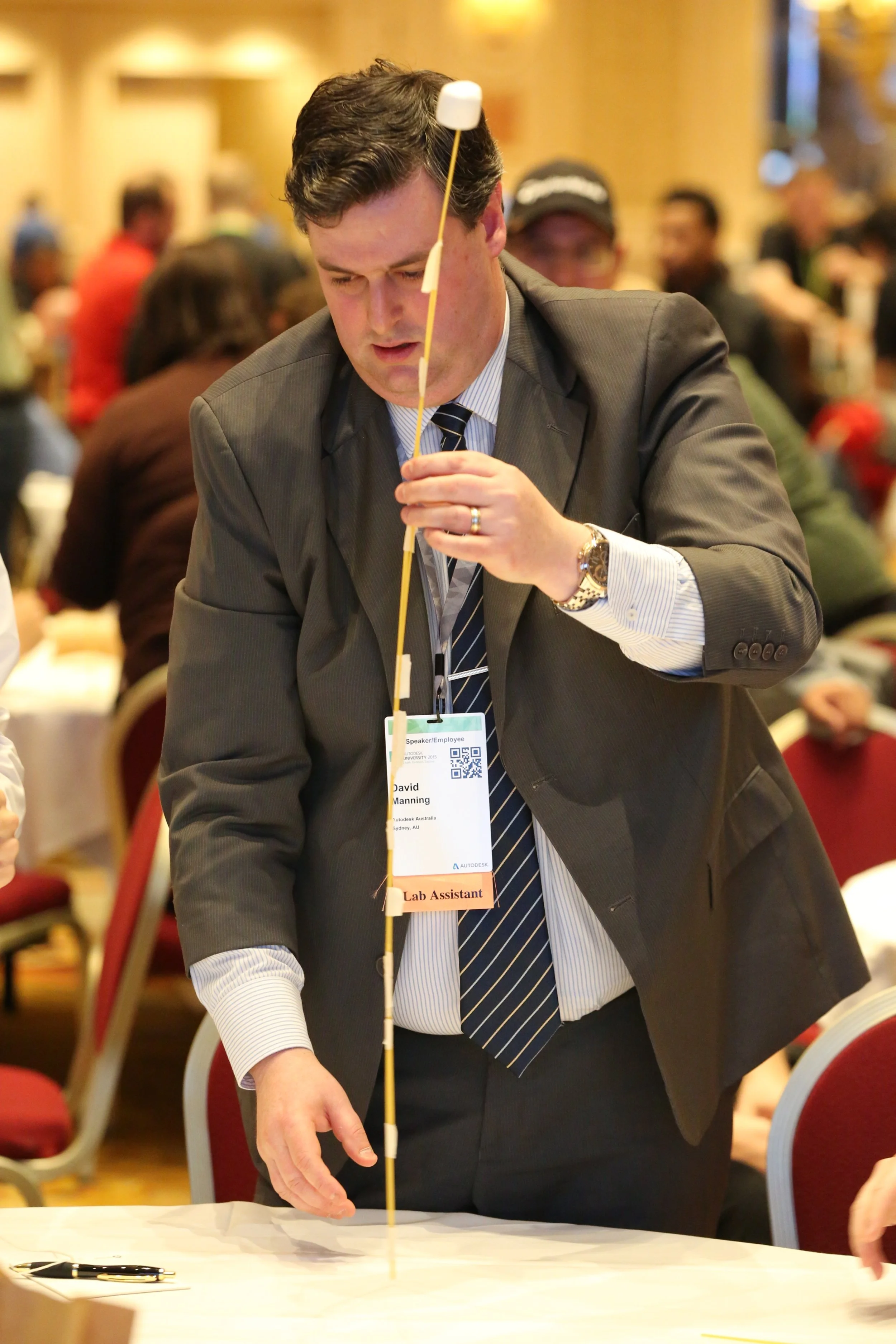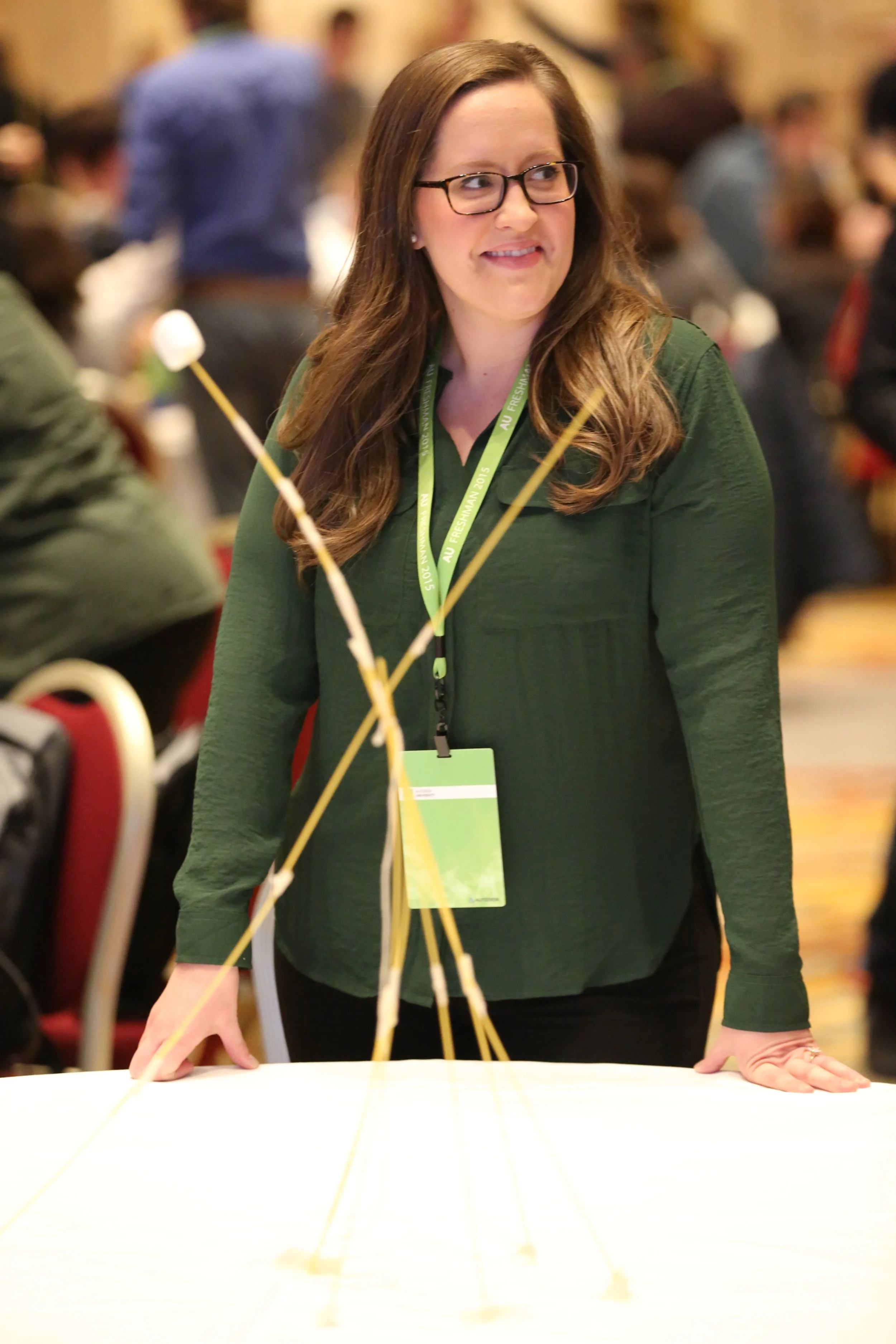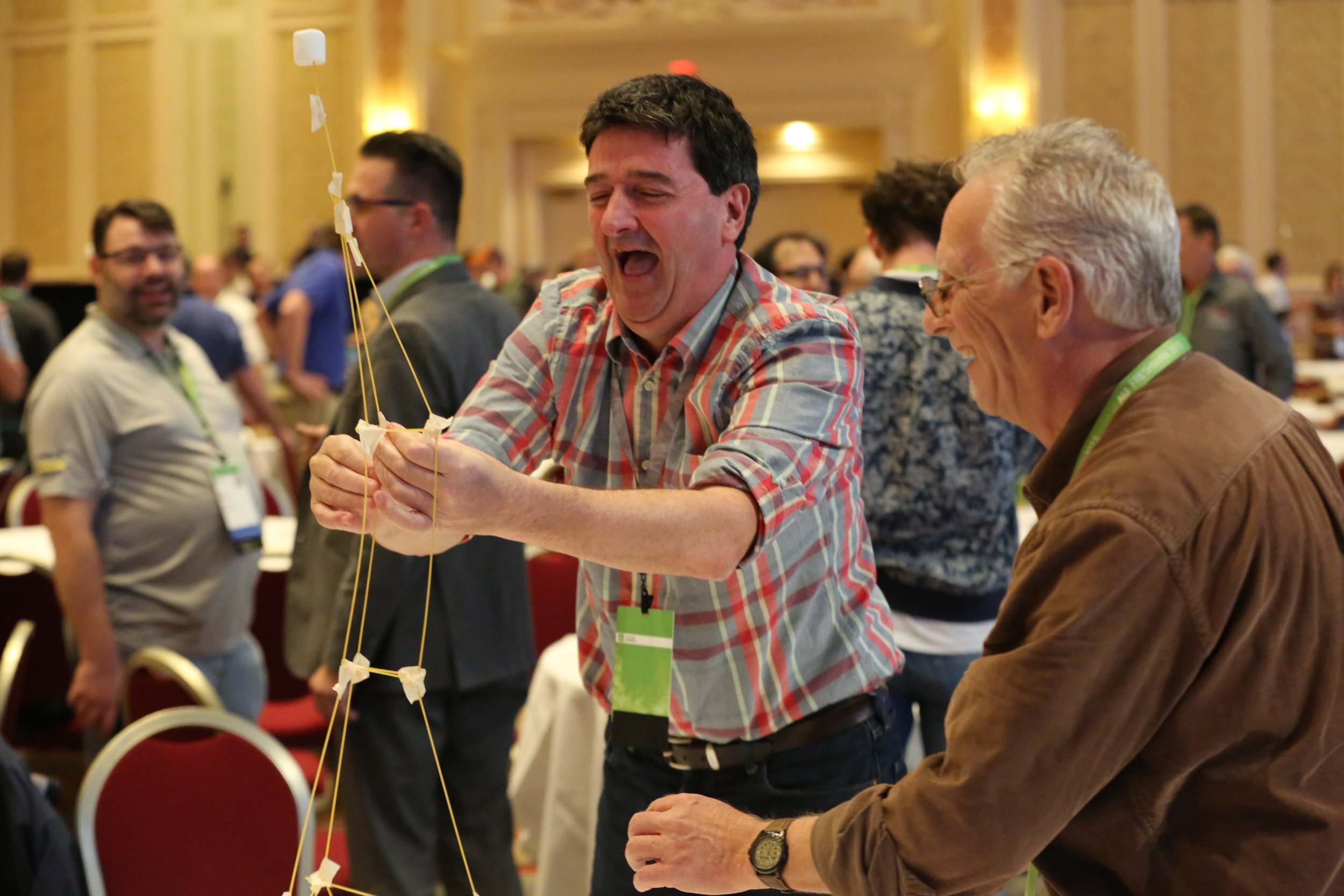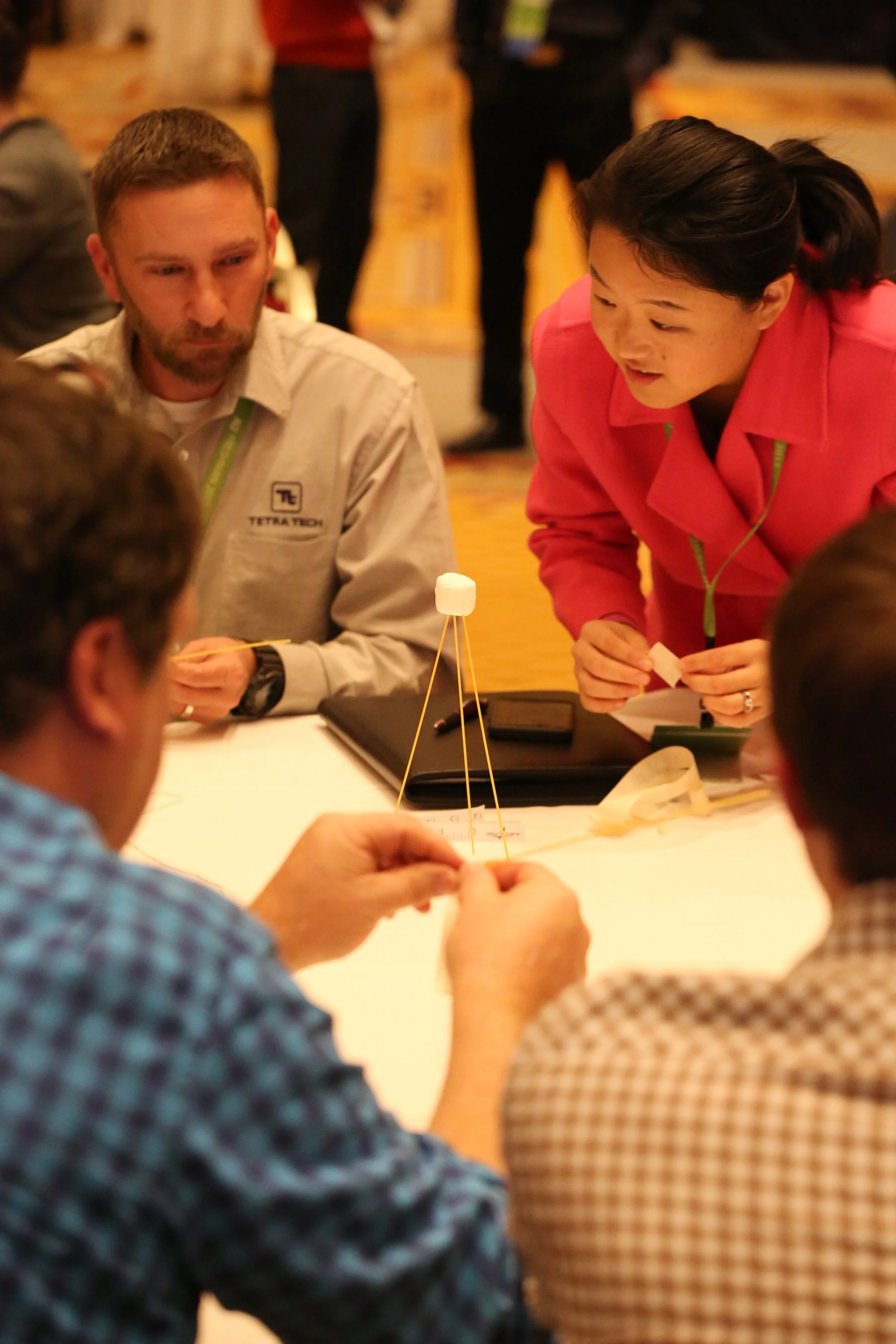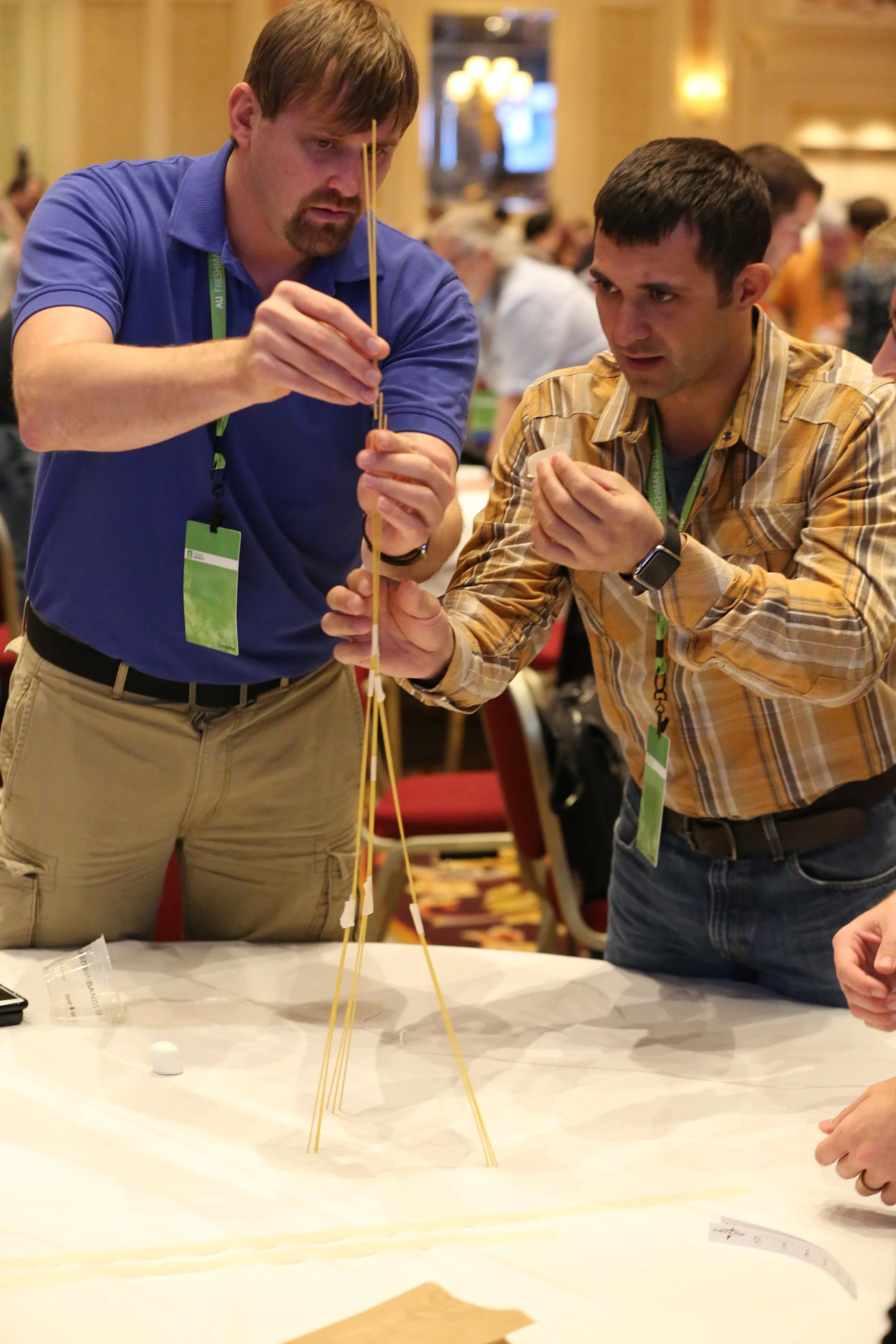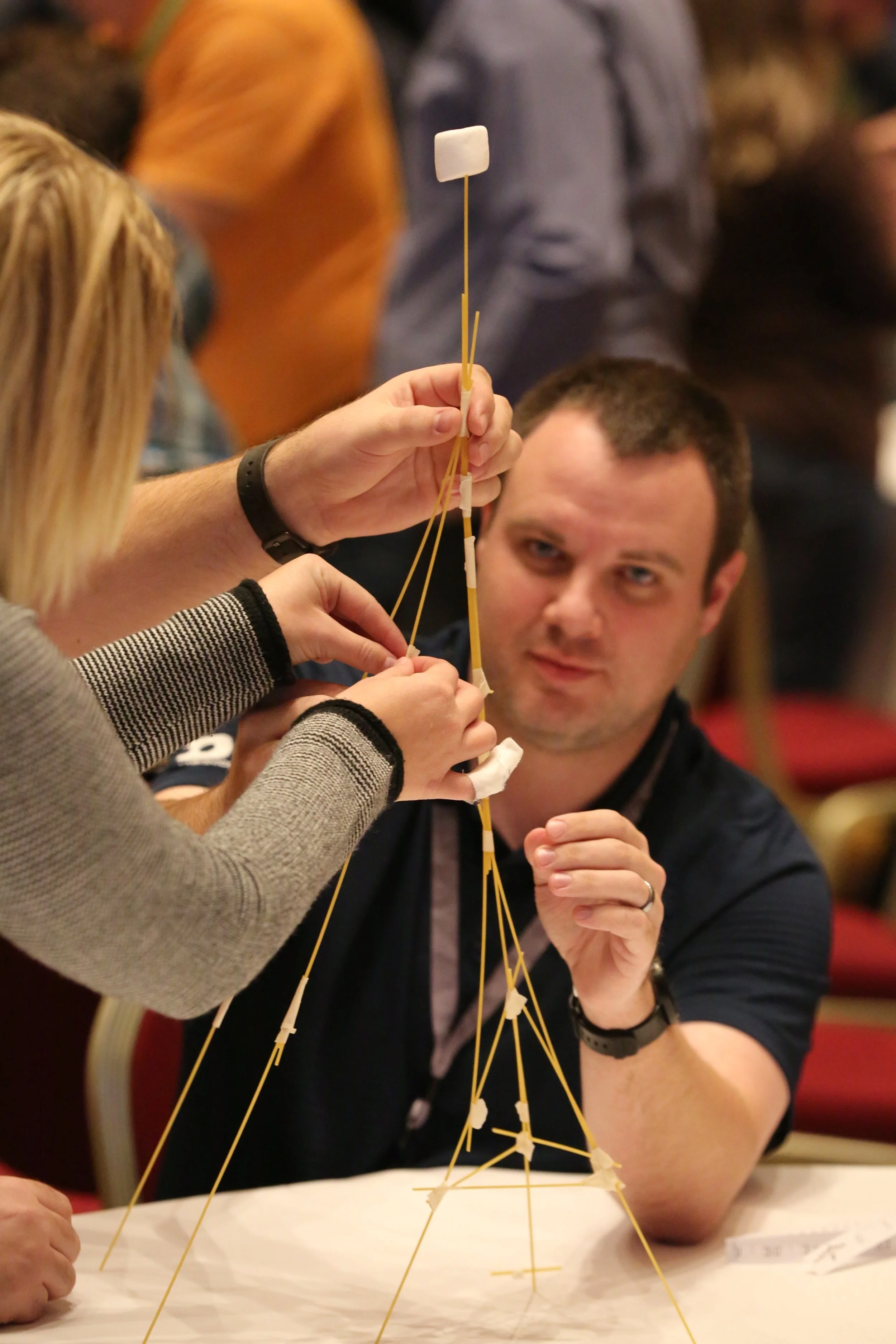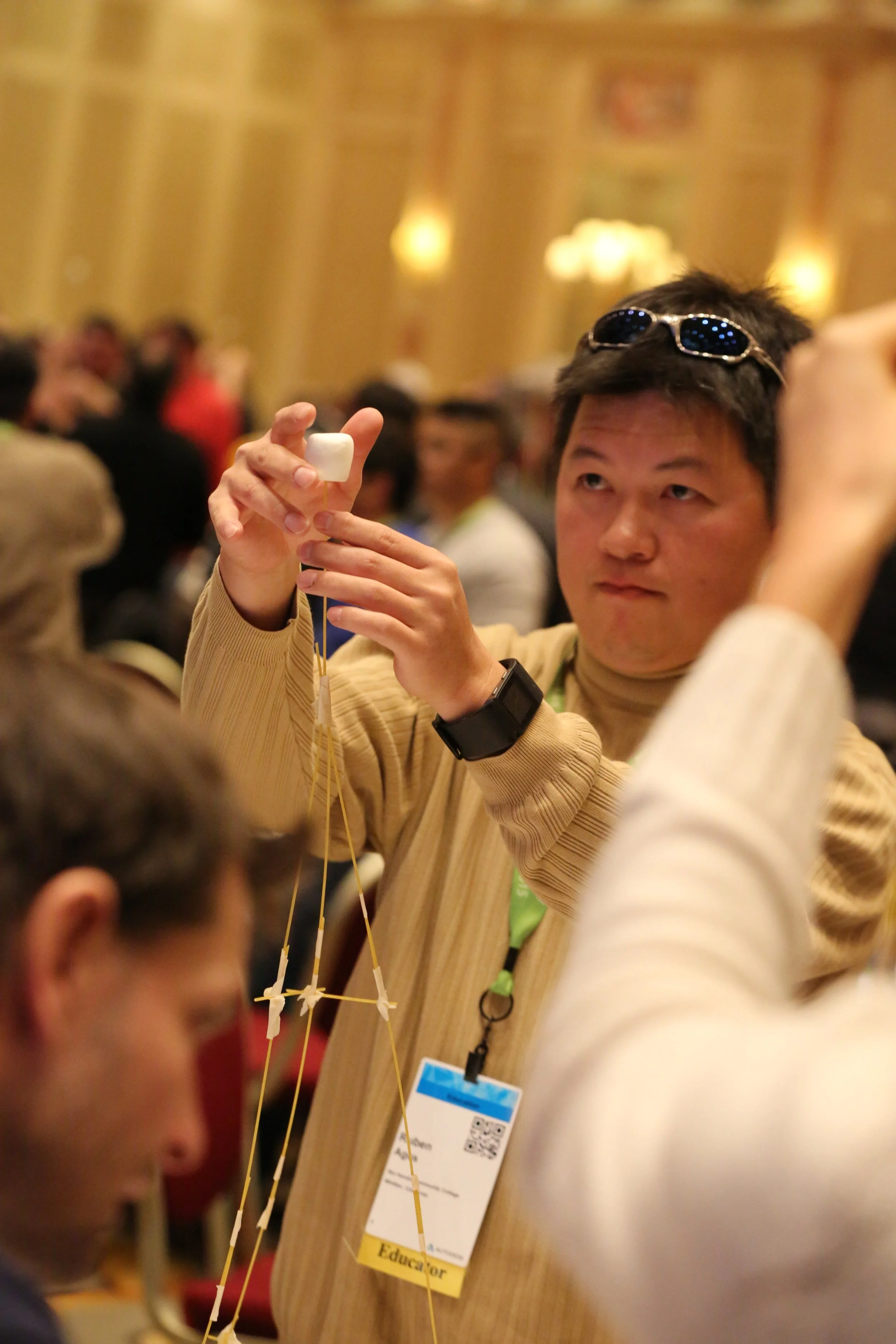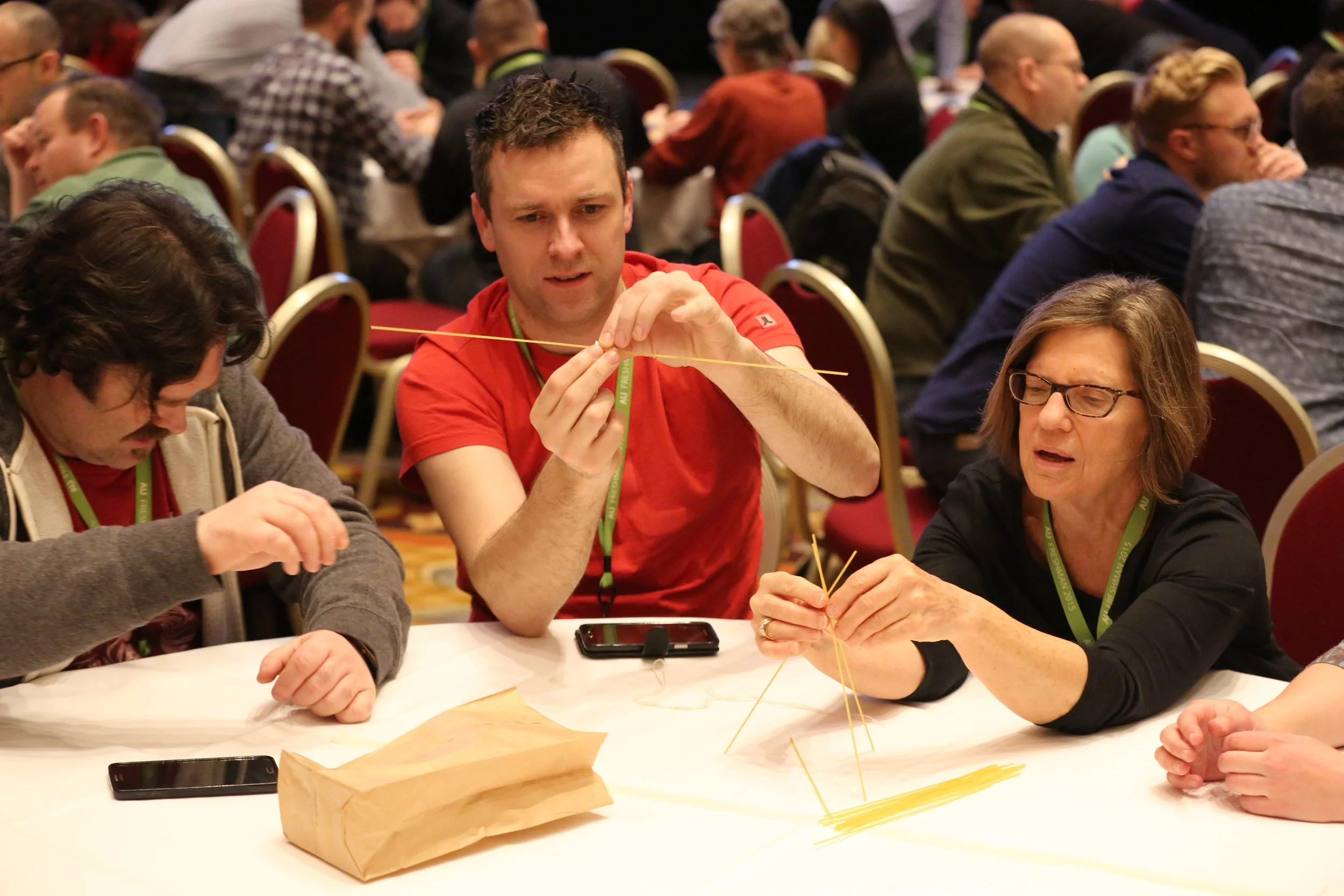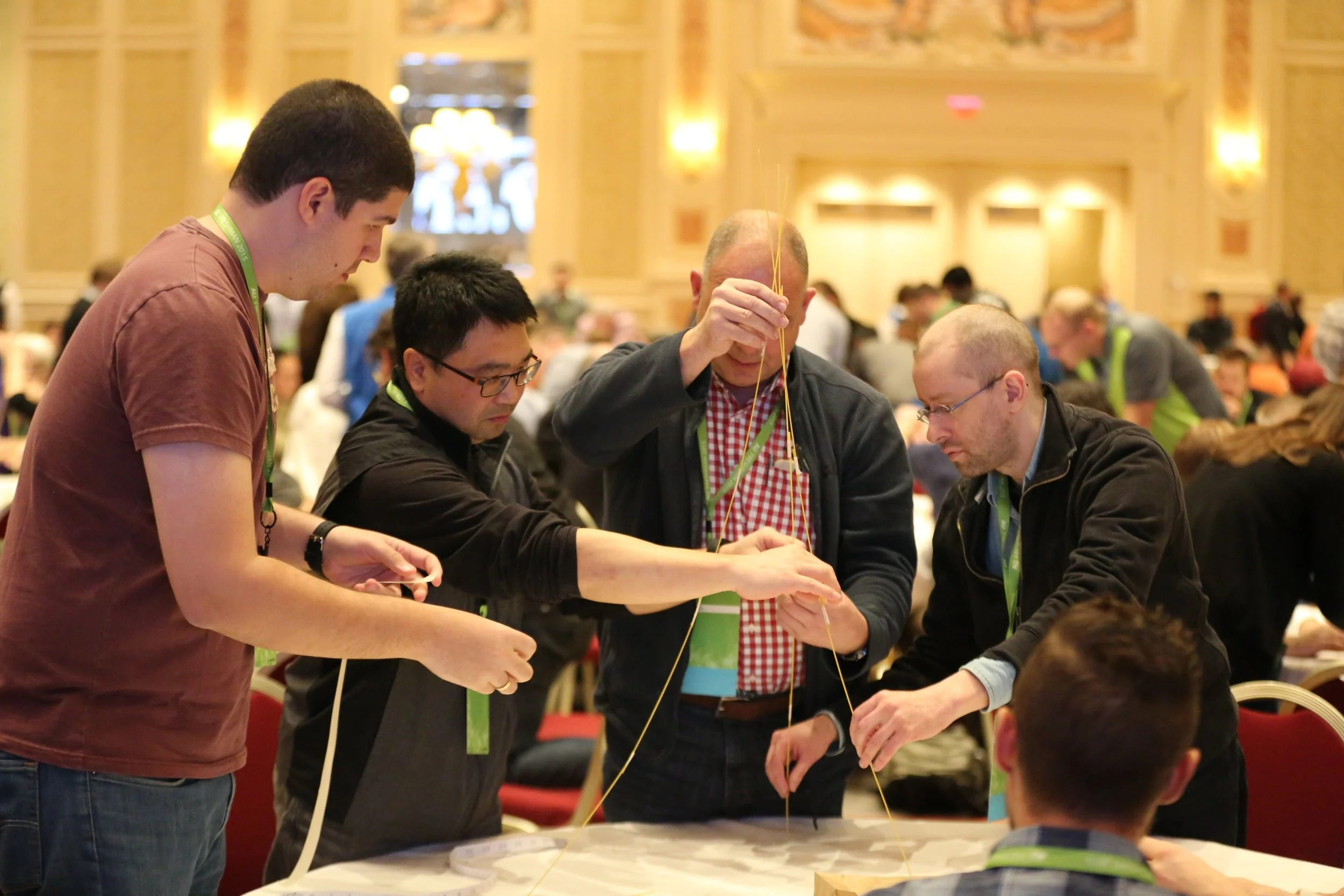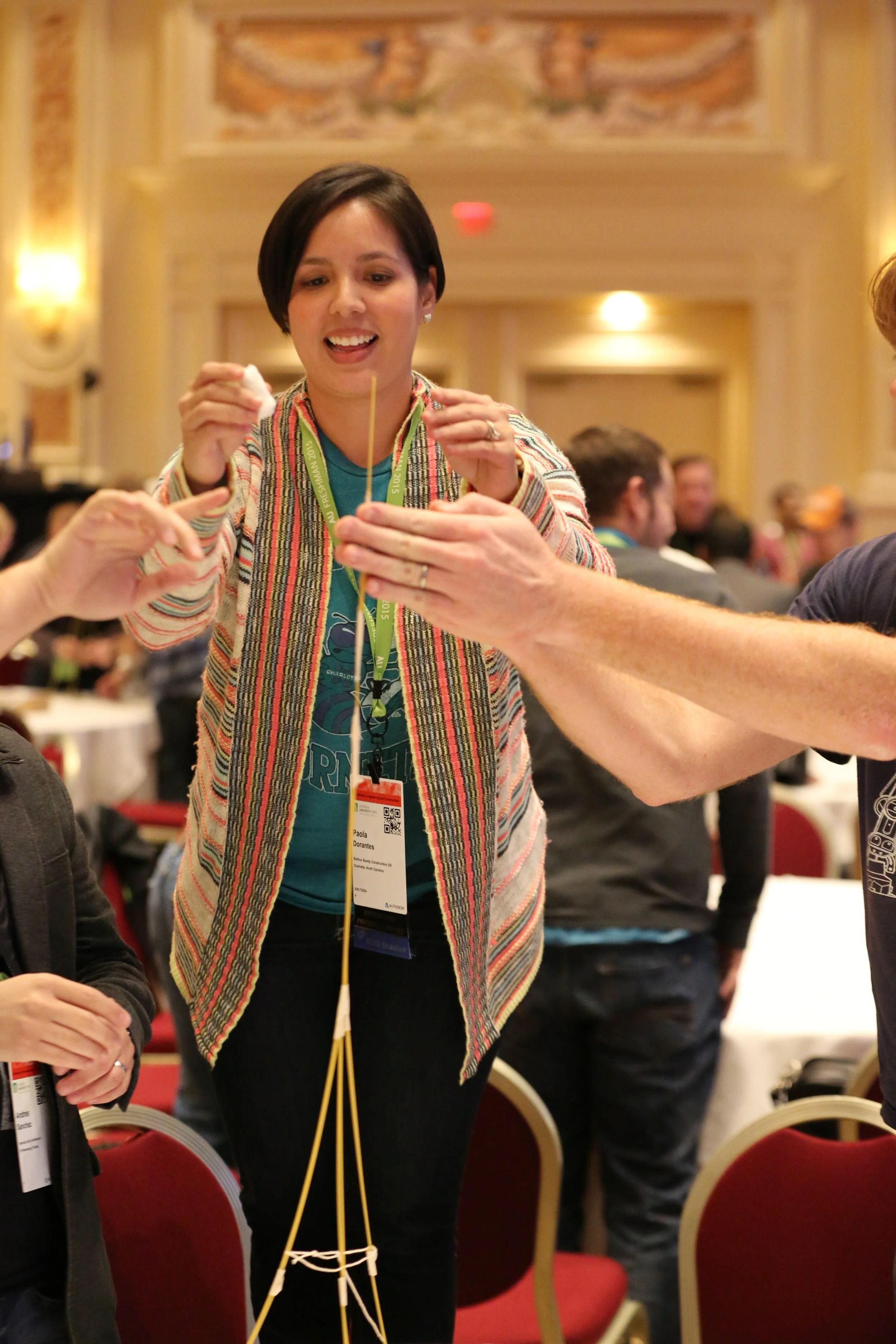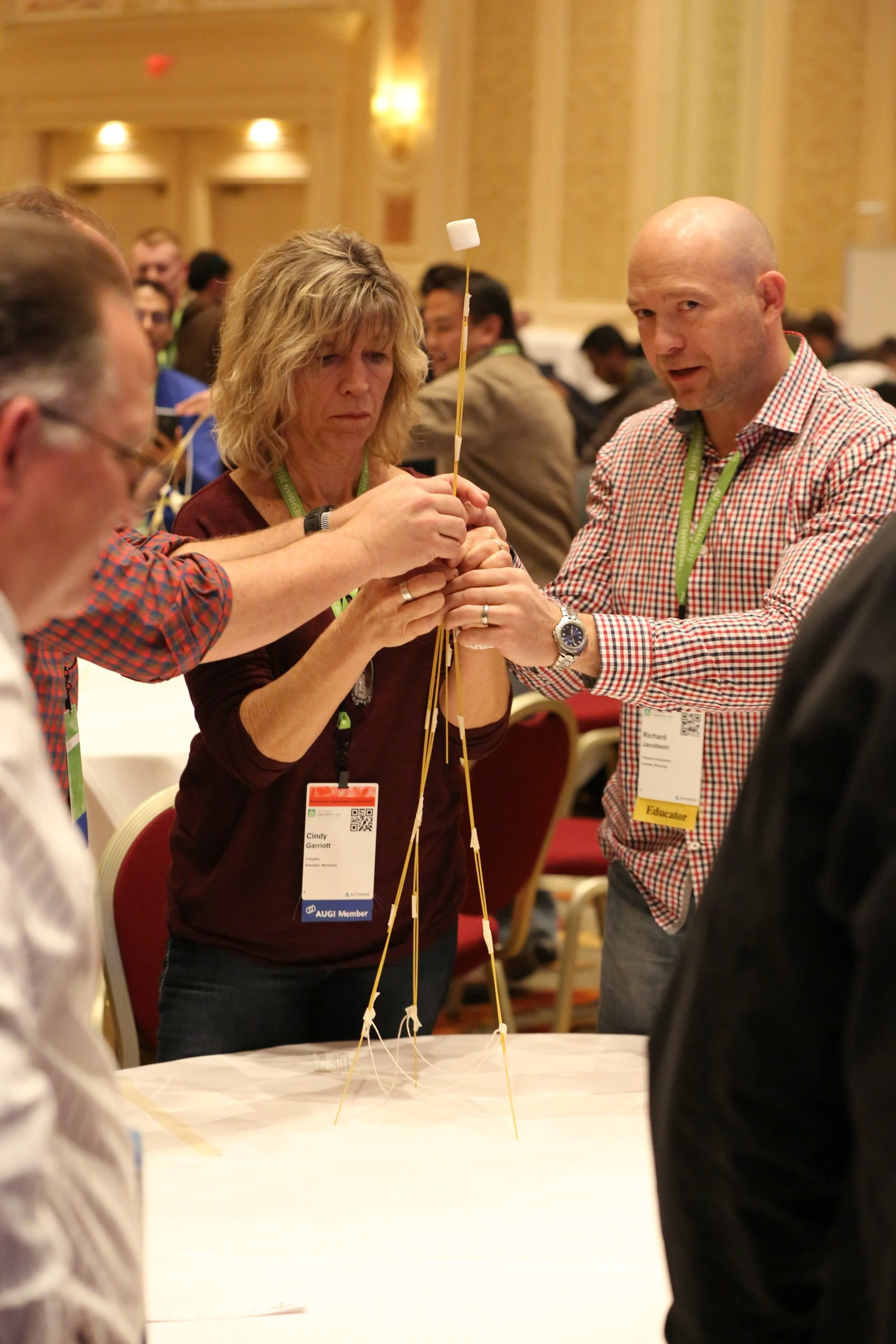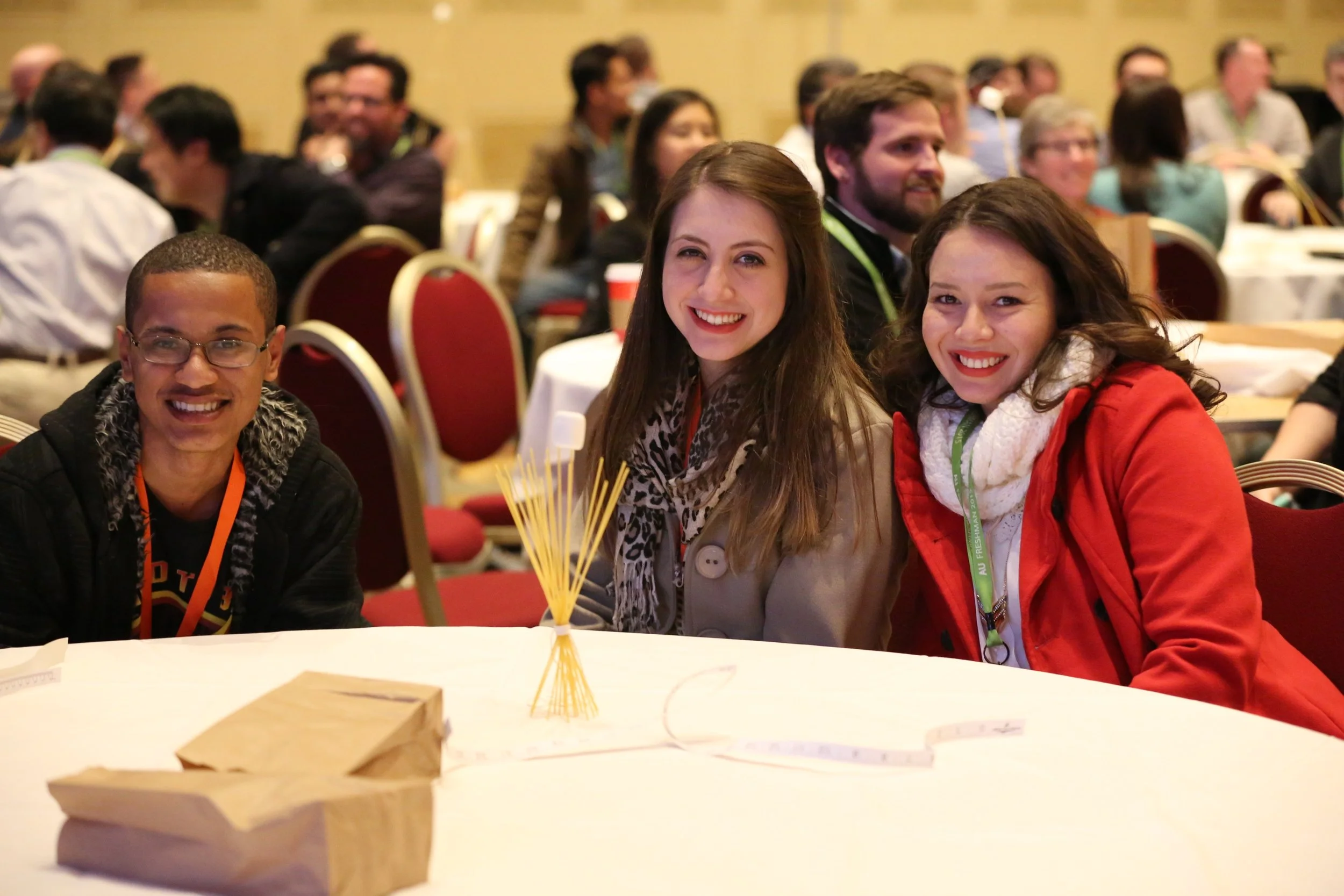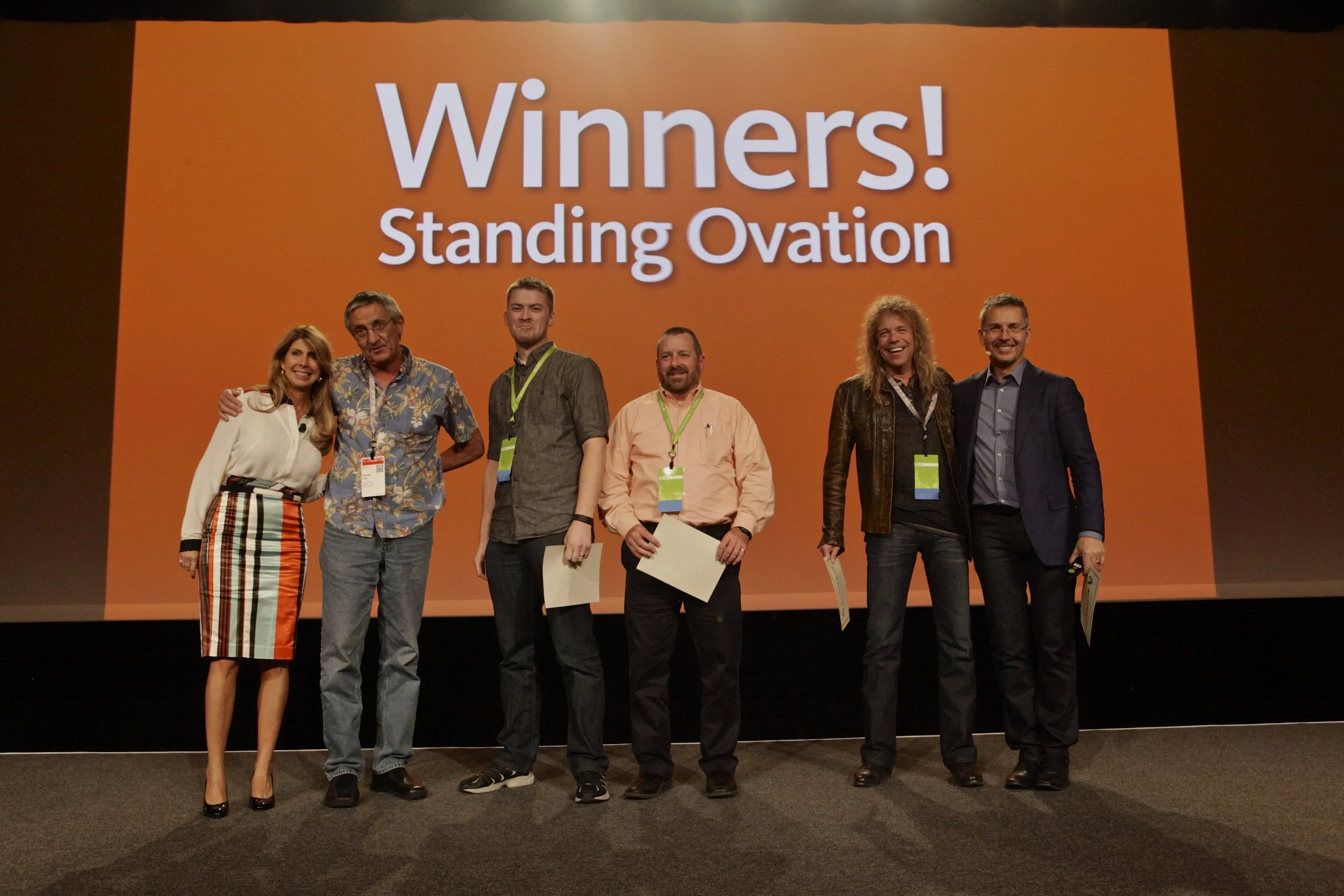Collaboration is a team contact sport.
Use the Marshmallow Challenge to get your team to work together better to build rapid prototype solutions.
The Big Idea
All too often, in business and life we need to create something new, working with people we don’t know, with not enough resources and not enough time. Sound familiar? The Marshmallow Challenge is a fun and instructive design exercise that encourages teams to work in these conditions to learn profound lessons in collaboration, innovation and creativity. It’s simple, fun, and instructive.
The task is simple: in eighteen minutes, teams must build the tallest free-standing structure out of 20 sticks of spaghetti, one yard (or meter) of tape, one yard (or meter) of string, and one marshmallow. The marshmallow needs to be on top.
Surprising lessons emerge when you compare teams’ performance. Who tends to do the worst? Why? Who tends to do the best? Why? What improves performance? What kills it?
If you need to kickstart a meeting, get a team into a creative frame of mind, or simply want to encourage your organization to think about what it takes to dramatically increase innovation, invest 45 minutes to run a marshmallow challenge.
An introduction to the MM Challenges from the Wicked Problem Solving system.
The original TED Talk called, ‘Build a Tower, Build a Team.’
Instructions
Step One | Schedule a Meeting
Find 45-60 minutes when your team can fully engage in the challenge. I’ve run challenges with groups containing as four people to as many as 800 people. Ensure that you have tables for each team.
Step Two | Assemble a Kit for Each Team
In advance of the meeting, create a marshmallow challenge kit for each team, with each kit containing twenty sticks of spaghetti, one yard of masking tape, one yard of string and one marshmallow. These ingredients should be placed into a paper lunch bag, which simplifies distribution and hides the contents, maximizing the element of surprise.
Spaghetti: Ensure that you use uncooked spaghetti. Avoid spaghettini as it is too thin and breaks easily. Fettucini is too thick.
String: Include string that can be easily broken by hand. If the string is thick, include scissors in your kit.
Marshmallows: Use a name brand or private label brand of marshmallows that measure the ‘standard’ size, about an inch an a half across. Avoid mini or jumbo marshmallows. Also avoid stale marshmallows. You’ll want squishy marshmallows that give the impression of lightness.
Masking Tape: Get standard masking tape. Generally, you’ll want to put the tape on the side of the table, the back of a chair or a nearby wall. Rolling it in the bag tangles the tape.
Paper Lunch Bags: Standard size lunch bags work well as do letter size manilla envelops.
Also ensure that you have the following tools to run the challenge:
Measuring Tape: Have a contractor’s retractable measuring available after the challenge is finished so you can measure the height of the structures.
Countdown Application or Stopwatch: The actual marshmallow challenge takes eighteen minutes. Eighteen minutes seems to be the magic time. Twenty minutes is too long and fifteen is too short. You can use a stopwatch, but better yet is to use a video projector and display the countdown time. There are many fee apps you’ll find with a quick search.
Video Projector and Sound System (optional): For more impact, use a video projector to deliver the Marshmallow Challenge Presentation (or your own) and a sound system for music during the challenge. Time out a play list of exactly 18 minutes of music. You’ll want the challenge to end at the conclusion of the last song.
Download a copy of the presentation: You can find the pdf instructions here:
Step Three | Deliver Clear Instructions
Be clear about the goals and rules of the Marshmallow Challenge. Use the Acrobat Presentation to introduce the challenge as well as to visually reinforce the instructions:
Build the Tallest Freestanding Structure: The winning team is the one that has the tallest structure measured from the table top surface to the top of the marshmallow. That means the structure cannot be suspended from a higher structure, like a chair, ceiling or chandelier.
The Entire Marshmallow Must be on Top: The entire marshmallow needs to be on the top of the structure. Cutting or eating part of the marshmallow disqualifies the team.
Use as Much or as Little of the Kit: The team can use as many or as few of the 20 spaghetti sticks, as much or as little of the string or tape. The team cannot use the paper bag as part of their structure.
Break up the Spaghetti, String or Tape: Teams are free to break the spaghetti, cut up the tape and string to create new structures.
The Challenge Lasts 18 minutes — no more, no less: Teams cannot hold on to the structure when the time runs out. Those touching or supporting the structure at the end of the exercise will be disqualified.
Ensure Everyone Understands the Rules: Don’t worry about repeating the rules too many times. Repeat them at least three times. Ask if anyone has any questions before starting.
Step Four | Start the Challenge
Start the countdown clock and the music with the start of the challenge.
Walk around the Room: It’s amazing to see the development of the structures as well as notice the patterns of innovation most teams follow.
Remind the Teams of the Time: Countdown the time. Usually, I call 12 minutes, 9 minutes (half-way through), 7 minutes, 5 minutes, 3 minutes, 2 minutes, 1 minute, 30 seconds and a ten-second count down.
Call Out How the Teams are Doing: Let the entire group know how teams are progressing. Call out each time a team builds a standing structure. Build a friendly rivalry. Encourage people to look around. Don’t be afraid to raise the energy and the stakes.
Remind the Teams that ‘Holders’ will be Disqualified: Several teams will have the powerful desire to hold on to their structure at the end. Usually because the marshmallow, which they just placed onto their structure moments before, causing the structure to buckle. The winning structure needs to be stable.
Step Five | Reflect on the Teams’ Experiences, and Lessons Learned
After the clock runs out, ask everyone in the room to sit down so everyone can see the structures. Likely, just over half the teams will have standing structures.
Measure the Structures: From the shortest standing structure to the tallest, measure and call out the heights. If you’re documenting the challenge, have someone record the heights.
Identify the Winning Team: Ensure they get a standing ovation and a prize (if you’ve offered one).
Share the Lessons of the Marshmallow Challenge: Deliver the attached presentation or just describe some of the key lessons of the marshmallow challenge:
Kids do Better than Business Students: On virtually every measure of innovation, kindergarteners create taller and more interesting structures.
Prototyping Matters: The reason kids do better than business school students is kids spend more time playing and prototyping. They naturally start with the marshmallow and stick in the sticks. The Business School students spend a vast amount of time planning, then executing on the plan, with almost no time to fix the design once they put the marshmallow on top.
The Marshmallow is a Metaphor for the Hidden Assumptions of a Project: The assumption in the Marshmallow Challenge is that marshmallows are light and fluffy and easily supported by the spaghetti sticks. When you actually try to build the structure, the marshmallows don’t seem so light. The lesson in the marshmallow challenge is that we need to identify the assumptions in our project - the real customer needs, the cost of the product, the duration of the service - and test them early and often. That’s the mechanism that leads to effective innovation.
Tips | Be clear and have fun
Introduction: Generally, a tight presentation introducing the challenge will motivate the team. Let them know this challenge has been conducted by tens of thousands of people in every continent, from the CFOs of the Fortune 50 to Students at all levels. The lessons learned are universal.
Goals & Rules: Be very clear about the goals and rules of the challenge. Generally, you’ll want to repeat them three times and reinforce them visually.
Cheating: In almost every challenge, there is at least one team that will want to cheat or bend the rules in their favour. The clearer you are about the rules the better the results.
Prizes: Offer a prize to the winning team. A standing ovation from the rest of the group is great. Books, software, perks - even cash are also great incentives. But be wary of big prizes as you’ll read in the Lessons of the Challenge.
Music: Select the appropriate music for the challenge. I prefer driving Rock or Pop, but dramatic classical works well too.
Hosted Workshop
I’ve run dozens of Marshmallow Challenge workshops in North and Sound America, Africa, Europe, India, Australia, and Japan. These workshops are tailored to guide teams to experience the real pressures, challenges, and insights of creative collaboration and are often part of a much larger engagements consisting of technology keynotes and Wicked Problem Solving sessions.
If you are interested in learning more about custom sessions and using the Marshmallow Challenge to engage your teams to untangle business issues, clarify strategy, adopt creative mindsets, doing more with less, figuring out what’s next, or just having a great icebreaker, connect to Tom in the contact section .
